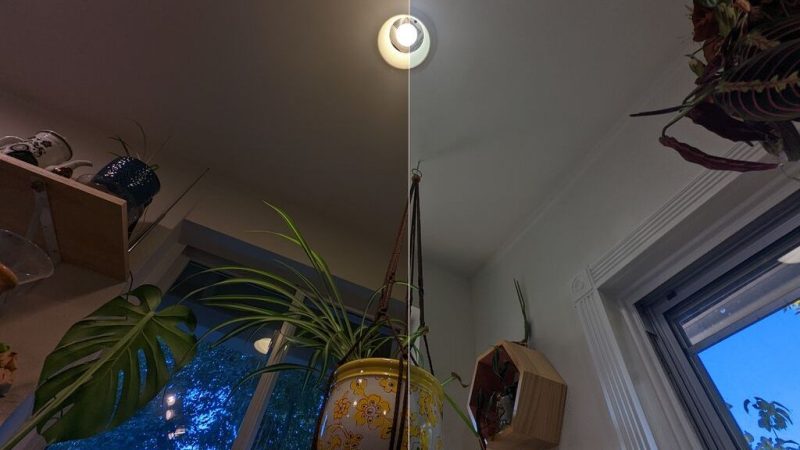
Artificial lighting is great, in that it lets us work and live well into the night. However, our bodies are dependent on the natural lighting cycles of the sun as part of their basic operation, and artificial lighting can interfere with this. [Tyler Cipriani] decided to use Home Assistant with some smart lights to try and make home lighting more suitable for our natural circadian rhythms.
The basic intent was to give the home bright white/blueish light during the day, matching the sun’s output. The light would then be altered to warmer yellow/red tones in the evening. The eye has cells that respond to blue light to regulate our circadian rhythms with the presence of the sun, so reducing blue light at night may help reduce disruption to sleep and other body processes.
Home Assistant has a Circadian lighting component available built specifically for this task. It’s a useful smart home tool for achieving such a job, too, as it readily works with a wide variety of hardware from different vendors. In [Tyler]’s case, light switches are Zigbee devices that talk to Home Assistant via a Zigbee2MQTT hookup and a Combee Zigbee gateway. Lights around the home are a mixture of Philips Hue devices and other brands of smart lights.
[Tyler] states the effects are “subtle but noticable.” He notes that it’s easier to feel sharp and work during the day, but harder to continue the lighting warms and dims at night. He points out that this is a design feature to help keep him on a healthy sleep schedule.
We’ve seen other circadian rhythm lights before. In fact, NASA uses them on the ISS, but you can build your own for a lot less than they spent. If you’ve got your own circadian lighting hacks, don’t hesitate to drop us a line!
Circadian Lighting For the Home Via Home Assistant
Source: Manila Flash Report
0 Comments